Exploring the Terra and Sky Connection in Zelda
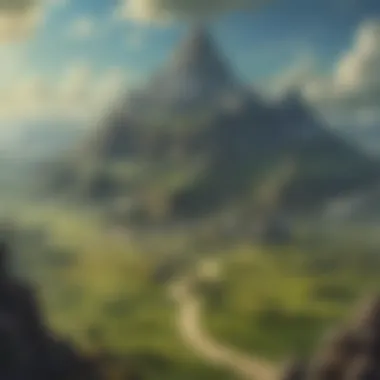

Intro
The Zelda universe captivates players with its rich landscapes and immersive narratives. Within this realm, two elemental aspects stand out distinctly: the earth, referred to as terra, and the sky. This article aims to delve into the intricate connections between these dualities, examining how they shape both gameplay and storytelling in the series. By investigating various titles, we will uncover how these elements enhance character development and narrative depth, ultimately yielding a more engaging experience for players.
In the following sections, we will discuss the unique features and mechanics that arise from the interplay between land and sky. Historical context plays a significant role in understanding these themes, so we will also reflect on the evolution of this connection throughout the franchise. Our exploration will include character analyses, lore discussions, and strategic insights, all centered around how the interconnection of terra and sky enriches the Zelda experience.
Let’s begin by examining the game reviews and see how these elements have been represented across different titles in the series.
Prelude to Terra and Sky
The relationship between land and sky is crucial in shaping the Zelda series' narrative landscape. This duality not only enhances the gameplay but also deepens the lore that fans have come to appreciate. The connection between Terra, which represents the solid earth, and Sky, symbolizing the expansive heavens, drives much of the storytelling in the franchise. Understanding this relationship allows for greater insight into the characters, gameplay mechanics, and thematic undercurrents that run throughout the series.
Defining Terra and Sky within the Zelda Lore
In Zelda lore, Terra and Sky are not just settings but integral parts of the world that enhance the emotional and thematic weight of the games. Terra encompasses the vast land of Hyrule, including its forests, mountains, and caves. This is where players interact with the environment, embark on quests, and develop their characters' abilities. The terrain itself becomes a living entity that influences the challenges faced by the players.
On the other hand, Sky, particularly visible in titles like "The Legend of Zelda: Skyward Sword," represents freedom, transcendence, and exploration. Here, players engage with floating islands and skies that offer a stark contrast to the grounded adventures on the surface. The vastness of the sky provides a sense of wonder and limitless possibilities that complement the more finite experiences found in the sprawling landscapes below.
Thematic Importance of Terra and Sky
The themes of Terra and Sky in the Zelda universe reflect a broader narrative about balance, growth, and the interconnectedness of existence. The earth often symbolizes stability, tradition, and the passage of time, while the sky takes on themes of innovation, exploration, and the unknown.
The cyclical nature of the journey between Terra and Sky echoes the character development of key figures like Link and Zelda. This narrative tension can be seen in:
- Character Growth: Both realms contribute to the protagonist's journey—Link learns from his experiences on the ground and through the quests that unfold in the sky.
- Gameplay Mechanics: Each domain offers distinct gameplay experiences. The earth involves combat and strategic exploration, while the sky introduces elements of flight and navigation.
- Lore and Mythology: The intertwining histories of both realms contribute to the mythology of Hyrule, creating a rich backstory that enhances the overall depth of the game.
"Each game represents a unique aspect of the intricate dance between Terra and Sky, offering new perspectives and challenges that keep the narrative fresh."
The Groundwork of Hyrule: Interpreting Terra
The connection between Terra and the gameplay experience in the Zelda universe is crucial. Hyrule's geographical diversity serves as more than just a backdrop; it shapes the narratives, influences character development, and affects gameplay dynamics. The foundations of Hyrule offer insights into the essence of the game itself, encapsulating the very nature of adventures that players embark upon. Understanding these landscapes allows enthusiasts to appreciate the intricate layers of storytelling and mechanics at play within each installment.
The Role of Geography in Zelda Games
In Zelda games, geography is not merely a setting; it's a character in its own right. Hyrule's varied landscapes, from mountains to plains and forests to deserts, not only create a visually captivating environment but also play a significant role in gameplay. Each area in Hyrule has distinct features that inform the player's journey. The mountains, for instance, might house powerful enemies or ancient ruins, while forests can conceal secrets and puzzles.
Moreover, the positioning of certain locations influences how players navigate through the story. For example, regions like the Lost Woods present challenges that require exploration and clever problem-solving, serving to enhance the immersive experience. Each geographic element on the map helps in crafting a sense of adventure, making each quest feel unique. Geography is therefore integral, affecting everything from the pacing of the game to specific quests that players undertake.
Hyrule's Terrain and Its Symbolic Resonance
Hyrule's terrain transcends its physical attributes, embodying deeper themes relevant to the overall narrative. The land often signifies conflict, peace, or the passage of time. For instance, Hyrule Field represents both a beginning and an endpoint for players. The vast open spaces allow for freedom of movement, while its history reflects the battles fought and the heroes who have walked its paths.
The settings, whether lush, barren, or mysterious, symbolize the emotional journeys of the characters. The desolate regions, like the Gerudo Desert, may evoke feelings of isolation, contrasting with the vibrant environments of Kakariko Village. Each biome invites various interactions, forces players to adapt, and drives home the underlying themes of growth, challenge, and triumph against adversities.
"Hyrule is not just a world; it is a canvas where the player's story unfolds through every hill and valley."
Understanding the interconnectivity of Terra in Hyrule enriches the gameplay. The land is a reflection of the characters’ inner struggles and triumphs, transforming mere landscapes into profound storytelling devices. Players discover that their actions resonate within the world, thereby crafting a personalized experience. This significance of geography perpetuates the engaging nature of Zelda, making each exploration feel vital within the narrative framework.
Ascension to the Heavens: Understanding Sky
In the Zelda universe, the sky is not merely a backdrop. It serves a crucial role in enhancing the narrative and gameplay experience. By understanding how the sky functions within the realm of Hyrule, players can better engage with the storyline and the environments provided through various games throughout the franchise. The presence of sky elements allows players to experience a sense of exploration and discovery that extends beyond terrestrial bounds.
The importance of skies reflects both in narrative depth and gameplay mechanics. It affects how players interact with the environment and influences character development. The dichotomy between terra and sky creates not only contrast but also balance. Exploring the sky provides new domains, challenges, and opportunities for adventure that enrich gameplay.
Sky Islands and Their Functions
Sky islands represent unique spaces in the Zelda universe that allow the player to venture into new terrains absent from the ground. These islands frequently offer distinct challenges and quests not found below. For instance, in "The Legend of Zelda: Skyward Sword," players utilize these islands to engage in aerial combat and encounter distinct creatures. This aspect expands the universe's mythology and narrative.
Some functions of sky islands include:

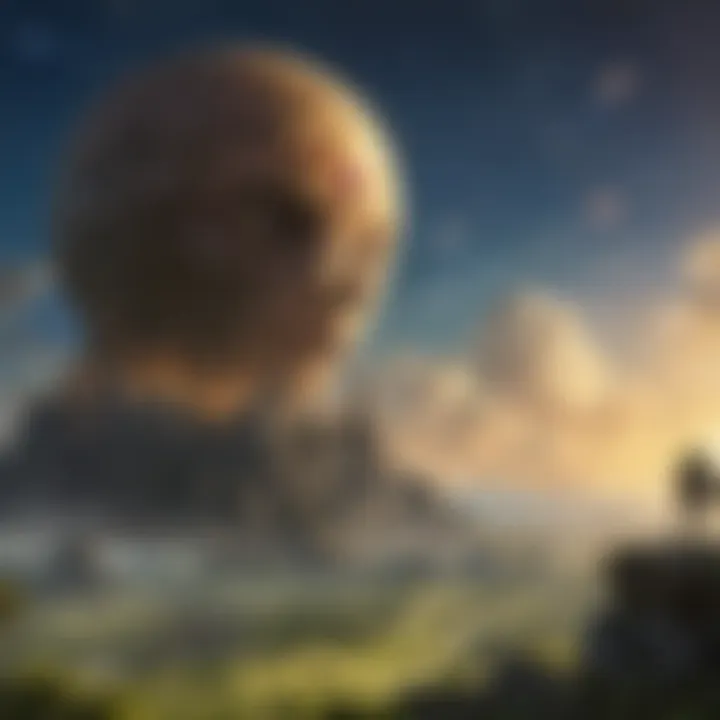
- Questing: Sky islands often act as hubs for quests, encouraging players to solve puzzles or gather materials.
- Combat Arenas: Aerial encounters provide innovative ways to engage with enemies, requiring different strategies than ground combat.
- Resource Gathering: Islands can be home to rare items or materials, enhancing the crafting and upgrade aspects of the game.
- Story Development: Narratives unfolded in the sky can add depth to the overall storyline, revealing the histories and legends of Hyrule.
These functions significantly influence gameplay and the player's immersion in the Zelda universe.
Aesthetic and Gameplay Contributions of the Sky
The sky contributes profoundly to both the aesthetic and gameplay elements of the Zelda franchise. Visually, the sky offers a dynamic backdrop that changes with time of day or weather, enriching the experience. These visuals set a mood that resonates with the player, providing cues to the adventure at hand.
In gameplay, the design of sky-related mechanics introduces unique elements. For instance, using "gliding" mechanics in "Breath of the Wild" grants players a sense of freedom, allowing them to explore Hyrule from a new perspective. This gameplay style enhances creativity in navigation and can open paths previously unavailable.
Key contributions include:
- Visual Diversity: Beautiful cloudscapes and evolving weather create an immersive game environment.
- Exploration Mechanics: Unique navigation methods increase player engagement and push for strategic thinking.
- Dynamic Interaction: Engaging with various elements in the sky—like finding new islands or battling aerial foes—adds layers of complexity to the gameplay.
Overall, the sky serves as more than just an aesthetic platform; it as integral to gameplay that influences how players engage with the story and characters.
"In Zelda, exploring the sky is akin to breaking boundaries, both literally and metaphorically, enriching the adventurer's journey."
The ongoing relationship between terra and sky unfolds various opportunities within the franchise, marking the importance of understanding the multifaceted roles that these elements play.
Narrative Techniques: Terra vs. Sky
Narrative techniques in the Zelda universe provide insight into how the themes of Terra and Sky are interwoven throughout the storyline. Each represents unique storytelling strategies that deepen the player's experience. Understanding these approaches can illuminate not just how stories are told, but also how environments play a critical role in shaping character motivations and plot developments.
Storytelling Approaches in Terra-based Quests
Storytelling in the context of Terra revolves around grounded and tangible experiences. Hyrule's vast landscapes, from dense forests to rocky mountains, offer a variety of backdrops that enrich narrative depth. Quest lines often reflect the struggles and triumphs characters face in navigating these terrains. For example, in The Legend of Zelda: Breath of the Wild, Link's journey across rugged terrains is symbolic of growth, resilience, and exploration. Tasks centered around these geographical features often involve resource gathering, puzzle-solving, and combat. Players experience a tactile connection to the world as they interact with finding items and engaging with NPCs.
Key elements of Terra narratives include:
- Environmental Challenges: Quests often present obstacles that mirror the harshness or beauty of nature.
- Character Development: Interaction with the environment fosters a sense of progression, evolving the hero’s skills and abilities.
- Cultural Significance: Hyrule's legends and landscapes are steeped in symbolism, reflecting the characters’ beliefs and values.
This approach ensures that players are not mere observers but active participants, shaping their own stories.
Sky-focused Narratives and Their Implications
Conversely, narratives rooted in the Sky exhibit a different dimension of storytelling. They explore themes of freedom, elevation, and transcendence. The introduction of Sky Islands in games, such as Skyward Sword, showcases a shift from the grounded experience associated with Terra to a more abstract, ethereal adventure. Here, quests often involve flight mechanics, exploration of floating realms, and a visual representation of liberation from earthly burdens.
Sky-based narratives provide:
- Unique Gameplay Mechanics: Much like traditional platforming but enhanced with verticality. Players must learn to navigate and explore in a three-dimensional space.
- Philosophical Undertones: Characters often reflect on destiny, courage, and the unseen connections between realms, prompting deeper engagement and contemplation.
- Culmination of Lore: Lore often surfaces in the form of ancient tales inscribed in the very fabric of the sky, enriching the understanding of Hyrule's history.
The contrast between these styles serves to emphasize the duality of the game’s world, empowering players to witness both the tangible and intangible aspects of the universe. Through these cleverly crafted narratives, Zelda intricately binds its characters and environments, leading to a richer storytelling experience.
"In the realm of Zelda, the experiences tied to both Terra and Sky are not isolated; they serve as a mirror to one another, enabling a holistic narrative journey."
Gameplay Dynamics: Balancing Terra and Sky
The interplay between terra and sky shapes the experience within the Zelda universe significantly. This balance can influence how players interact with the game environment and progress through the narrative. When examining the mechanics of terra and sky, it becomes clear that each offers unique gameplay dynamics that can enhance immersion and engagement.
Mechanics Influenced by Terra
In many Zelda games, the terra elements play a pivotal role in gameplay. The geography of Hyrule often influences the way players navigate through the world. The varied landscapes, from mountains to forests, each come with their own set of challenges and puzzles. Players must engage with the terrain directly, whether through climbing, swimming, or navigating rocky surfaces.
Specific mechanics include:
- Environmental barriers: Players often encounter obstacles that require creative problem-solving, such as boulders blocking paths or lakes that need to be crossed.
- Interactive objects: Many terra features can be manipulated, like cutting grass for resources or moving stones to reveal hidden pathways.
- Quest-specific locations: Certain quests are exclusive to specific geographic areas, creating a need for exploration and understanding the lay of the land.
These mechanics remind players of the importance of terra as a foundational element in the gameplay experience. By successfully engaging with it, players gain a sense of achievement and progression.
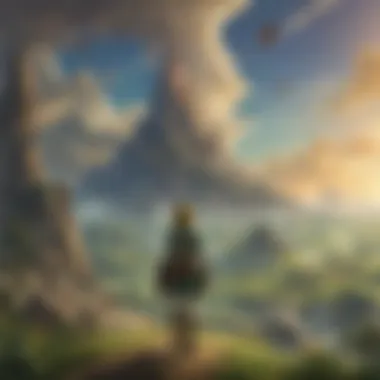

Gameplay Innovations from Sky Elements
Conversely, the sky elements introduce gameplay innovations that expand how players can experience Zelda. The introduction of sky islands or floating platforms often shifts gameplay into a new dimension. Navigating these aerial landscapes can be a refreshing change from traditional terra-based mechanics.
Innovative aspects of sky include:
- Vertical exploration: Players can utilize various tools for flying or gliding, such as the paraglider in Breath of the Wild. This opens up new areas and routes not possible when grounded.
- Dynamic environmental interactions: Sky islands may contain unique flora and fauna or be home to different gameplay mechanics, such as wind currents affecting movement.
- Puzzle complexity: Climbing and finding your way through the sky often presents multi-dimensional puzzles that challenge players' spatial awareness and decision-making skills.
The integration of sky dynamics encourages players to look beyond the surface and engage with the environment on a different level, adding depth to the overall gaming experience.
In sum, the balance of terra and sky elements not only enriches gameplay but also enhances narrative and thematic connections within the Zelda universe. Players find themselves continually adjusting their strategies, resulting in a more dynamic and engaging gaming experience.
Character Perspectives: Heroes of Terra and Sky
Exploring the characters within the Zelda universe, especially Link and Zelda, offers unique insights into the conceptual distinction and interrelation of Terra and Sky. It is through their experiences and perspectives that players grasp the themes intertwined with these two domains. Their narratives highlight the depths of their environments, emphasizing how land and sky shape their identities and quests.
Link: The Terra-Bound Hero
Link, as the main protagonist, embodies the essence of Terra. His adventures predominantly occur on the ground, navigating through Hyrule's diverse landscapes. The constructs of the land symbolize more than just physical barriers; they represent history, culture, and the challenges faced by residents of Hyrule.
The mechanics of Link’s journey often rely heavily on terrestrial elements. His abilities are influenced by the terrain. For instance, in games like "The Legend of Zelda: Breath of the Wild," different regions possess unique environmental challenges. Link may rely on climbing mountains, traversing forests, or exploring caves. Each terrain contributes to gameplay and storytelling, revealing how geographical features impact his quests.
Link's character development is tightly woven into the fabric of the ground. His courage and resourcefulness shine as he faces various threats that threaten the stability and peace of Hyrule. Through this, players engage with the notion that conquering these challenges is not just a game mechanic but a symbolic assertion of strength and perseverance against adversity.
Zelda: The Guardian of the Sky
In contrast, Princess Zelda represents the ethereal qualities of the sky. Her role varies across different narratives in the series, often associating her with wisdom and magic. The sky, in her context, signifies protection and overarching presence. Zelda’s connection to the sky often manifests through her abilities, linked to light and the divine. Her powers serve as guidance, assisting Link from above as he navigates the challenges set upon him.
Zelda's presence in the story transcends physical bounds, often drawing from ancient traditions and legacies entrenched in Hyrule's history. In games such as "The Legend of Zelda: Skyward Sword," she actively takes part in establishing the fundamental connections between Terra and Sky.
As a guardian, she offers a sense of purpose that both elevates and inspires. The beauty of her character lies in the balance between her terrestrial roots and celestial responsibilities. Her transformations and abilities indicate that the sky governs not only the outlying mythos of the world but also intertwines with the personal journey of her character.
"The dichotomy of Link and Zelda presents a rich narrative tapestry, interlinking personal struggles with overarching themes of land and sky. Each character’s journey is a reflection of their environment and the eternal balance between Earth and the heavens."
In summary, the perspectives of Link and Zelda within the realms of Terra and Sky are crucial for understanding their significance in the Zelda universe. Beyond mere gameplay functions, they symbolize the larger narrative connections that enhance the gaming experience. Their stories not only propel the plot forward but also embed greater thematic depth, illustrating the delicate interplay of these two realms.
Rituals and Legends: Terra and Sky in Zelda Mythology
The connection of Terra and Sky in the Zelda universe is not only a structural element of game design but also serves as a framework for the mythology that surrounds Hyrule. The narrative threads that weave through the games often draw on rituals and legends that embody these dualities. Each game builds upon the legacy of those that came before, creating a rich tapestry of lore steeped in symbolism. This section investigates the significance of these rituals and legends, and how they influence both the game's narrative and its players' engagement.
The Legacy of Terra-based Myths
Terra in the Zelda games is frequently associated with the foundational myths of Hyrule. These myths serve to ground the story within the rich soil of its history. Land and earth represent stability, heritage, and the role of humanity in shaping one’s environment. For instance, in "The Legend of Zelda: Ocarina of Time", the mythology surrounding the Goddess of the Earth, Nayru, emphasizes the importance of wisdom and balance needed in governing Hyrule.
Moreover, myths often depict the struggles between good and evil as cyclical, echoing the seasons of the land. These cycles highlight key themes of renewal and legacy. The stories passed down through generations not only give context to characters but also enrich the world-building process. Fans often explore these myths through fan theories and discussions on forums like Reddit, further demonstrating how the community engages with the lore.
Sky Legends and Their Impact on Hyrule's History
The legends associated with the Sky play a critical role in establishing the divine connection felt in the Zelda universe. Unlike the terra-based myths that focus on human experience, sky legends often delve into the celestial and the ethereal. For example, in "Skyward Sword", Link’s quest is closely tied to the legends of the Skyloft, hinting at the significance of the sky as a realm of possibilities and adventure.
These legends not only shaped the events that unfold within Hyrule but also influenced its culture. Characters often reference sky myths to explain certain events or natural phenomena. The ties between the sky and the gods who watch over Hyrule profoundly affect the motivations of characters throughout the series.
The interplay of terra and sky enhances the narrative depth in the Zelda universe, influencing not just characters but also players' investment in the legend of Hyrule.
As players delve into these sky legends, they find that the impact of these stories extends to gameplay elements such as exploration and puzzle-solving. Through recognizing the connection between legends and their implications within gameplay, players gain a more comprehensive understanding of their adventure in Hyrule's history.
In essence, the rituals and legends involving both terra and sky are vital to the Zelda mythology. They provide a common thread that resonates with players and enthusiasts of the series, merging gameplay, narrative, and culture into an immersive experience. This exploration invites current and future fans to appreciate the underlying themes that influence the battles of light against dark, bringing the Terra and Sky duality into sharper focus.
Art and Design: Visual Representations of Terra and Sky
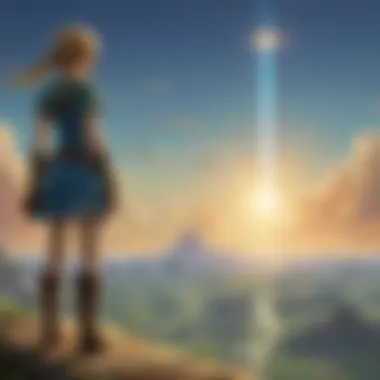
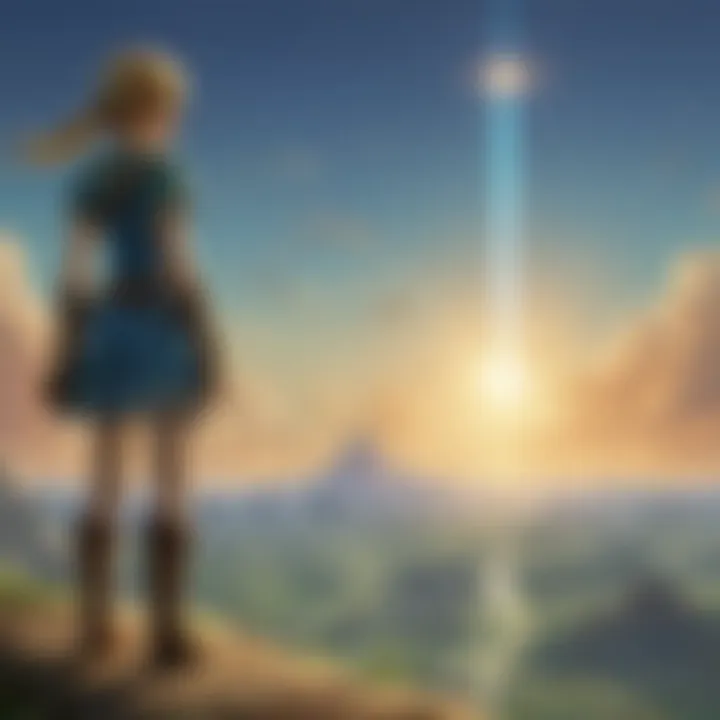
The art and design within the Zelda universe vividly convey the dichotomy of terra and sky. Visual representation is more than aesthetic; it shapes players' experiences and influences their interpretations of the narrative. Each game employs distinct artistic styles that align with the themes of land and sky, crafting a world that resonates deeply with the player. This section will explore how these artistic choices embody the connection between these two elemental realms.
Artistic Styles Representing Terra
The representation of terra often involves earth tones and earthy textures. The environments are rich in detail, depicting lush forests, rocky mountains, and serene landscapes that evoke a sense of grounding and stability. Each scene within Hyrule, for instance, is meticulously crafted to reflect diverse geographical features that enhance gameplay and narrative.
In games such as "The Legend of Zelda: Breath of the Wild," the visuals of Hyrule’s diverse terrains create an immersive experience. The vibrant fields contrast against the darker tones of mountainous regions, guiding players through the landscape, while instilling a sense of adventure. The choice of colors can signify various aspects of the earth—life, danger, and exploration. Players often find that their attachment to the land deepens through these representations, allowing them to form a bond with the geographic elements.
"In the Zelda universe, art is not simply visual. It resonates, conveying emotional undertones that enrich the gaming experience."
Moreover, the design of characters—such as Link—often reflects terrestrial attributes. His earthy attire symbolizes his connection to the land while aiding in the gameplay mechanics, where environments need to be navigated pragmatically. This style of character design reiterates the importance of the earth in relation to personal identity within the narrative.
Sky Aesthetics and Game Design Choices
The aesthetic representation of sky diverges significantly from that of terra. Here, developers utilize light colors and ethereal designs to create a feeling of serenity and vastness. The sky islands featured in "Skyward Sword" are examples where designers exploit the visual representation of open space to fill players with wonder and exploration
Game design choices in sky sections often leverage verticality. This enhances gameplay through mechanics that encourage players to ascend and explore new dimensions. The change in design reflects a shift in gameplay focus, from ground-based strategies to aerial navigation. The contrast between the expansive sky and the confined area's constraints challenges players in unique ways, nurturing a duality that is central to the game's experience.
Additionally, the audio-visual relationship is crucial in depicting the sky’s essence. The soothing music, paired with a palette of blues and whites, creates a tranquil atmosphere that contrasts sharply with the sometimes intense action of ground-based areas. This distinction serves to engage and relax players, fostering different emotional responses to the gameplay.
Community Engagement: Player Interpretations of Terra and Sky
The relationship between terra and sky in the Zelda universe stimulates a lively dialogue among the player community. This engagement is not simply surface level; it delves into interpretations that reflect the individual experiences of gamers. Understanding how players perceive these elements aids in grasping their impact on the gaming experience. Here, we discuss the facets of community engagement as it relates to fan theories and insights into the sky regions.
Fan Theories on Terra Elements
Players often construct elaborate theories about the land aspects within Zelda. These theories provide insight into how the geography of Hyrule influences gameplay and narrative. They discuss the mystical connection between various locations in Hyrule such as the Lost Woods or Death Mountain. Players might suggest that these areas carry historical significance, impacting events many generations ago.
For example, theories about the origins of the Kokiri and their connection to the forest often emerge within community discussions. The players seek to understand how this connection relates to broader themes such as growth and loss. These interpretations help engage players on a deeper level, allowing them to appreciate the land's richness in lore.
Additionally, the significance of specific locations can often be a topic for speculation. Questions arise about why certain regions have remained untouched by the calamities faced by the kingdom. The exploration of these ideas encourages a rich exchange of viewpoints and encourages players to reinterpret established lore.
Sky Enthusiasts: Analyzing Community Insights
The sky elements in Zelda games invite insights that are equally profound. Enthusiasts of sky regions often dedicate discussions to the mechanics and visual appeal inherent in these areas. They analyze how the floating islands connect gameplay to abstract themes of freedom and exploration.
Certain titles, like "The Legend of Zelda: Skyward Sword," prominently portray the connection between earth and sky. Players frequently note how this relationship enhances their sense of adventure. The sky serves not just as a backdrop, but as an integral part of plot progression and exploration mechanics.
Discussions often focus on design choices and how they resonate with players. The aesthetics of the sky islands may evoke feelings of serenity or wonder. Enthusiasts dissect these feelings, tying them back to the emotional stakes in the game progreesion.
"The sky in the Zelda universe is not just a setting; it is a pathway to understanding the broader themes of journey and discovery."
Through forums and social media platforms like Reddit and Facebook, these insights are shared and debated among a diverse audience. Such engagement reflects the players’ investment in the narrative and their desire to understand broader meanings within the universe.
Ultimately, player interpretations serve as a vital link between community and creators, fostering a collaborative environment that enriches the gaming landscape.
Culmination and Future Directions
The exploration of Terra and Sky in the Zelda universe is more than just a thematic investigation. It serves as a lens through which we can analyze gameplay, narrative depth, and character evolution across multiple installments of the series. Understanding how these two realms intersect is essential for appreciating the complexities within the games. They shape player experiences and influence emotional engagement with the story.
This article highlighted various aspects of Terra, emphasizing its geographic significance and symbolic resonance. At the same time, the discussion illustrated how Sky elements affect gameplay, aesthetics, and narrative techniques. Engaging with these themes enhances our appreciation of the rich lore established in the Zelda series. Not only do they impact game mechanics, but they also offer insights into character development, most notably with figures like Link and Zelda.
Ultimately, the interconnection of these two realms reflects the underlying duality of life itself—grounded yet aspirational. By weaving both worlds into a cohesive narrative, the game developers craft a complex emotional and intellectual tapestry that players can explore.
Summation of Terra and Sky Themes
The relationship between Terra and Sky is intricate. Terra represents stability and foundational elements of the Zelda universe. The vast landscapes, rugged mountains, and sprawling fields signify tradition and history, linking players to their roots. Skyscapes, conversely, symbolize ambition and exploration. The floating islands and expansive skies invite players to ascend beyond their limits. This duality enriches the gaming experience, providing a balance between familiarity and the urge to venture into the unknown.
- Interdependence: Terra and Sky maintain a crucial interplay. Actions taken in one realm often influence the other. For instance, completing quests in Hyrule might activate changes in the sky, showcasing how deeply intertwined their narratives are.
- Character Dynamics: Characters are often defined by their relationships with these realms. Link is rooted in the earthly, while Zelda often represents a connection to the celestial. This character dichotomy enhances storytelling.
- Evolution of Gameplay: Over time, the balance between these elements has shifted. In earlier titles, Terra held prominence. However, as the series progressed, innovative gameplay mechanics introduced more sky-based elements, inviting players into a realm of whirling challenges.
Anticipations for Future Zelda Installments Addressing Terra and Sky
Looking ahead, future Zelda games are likely to continue exploring the balance between Terra and Sky. The increasing complexity of gameplay mechanics could incorporate more multidimensional interactions between these realms. Innovations such as open-world designs may allow for seamless transitions, enhancing the feeling of a connected universe.
- Enhanced Exploration: Future titles may introduce new methods for exploring both realms, such as advanced gliding mechanics or unique terraforming abilities, making the experience richer.
- Richer Storylines: Anticipate narratives that delve deeper into the history of Terra and Sky. The connection between these realms could not only be a gameplay mechanic but serve as a central plot element, exploring their origins and conflicts.
- Expanded Lore: As Zelda lore expands, understanding the implications of Terra and Sky may become a focal point. New characters could emerge, bridging both worlds in unexpected ways.
In summary, our journey through the duality of Terra and Sky in the Zelda universe substantiates their foundational role in shaping player engagement. The future likely holds continued narratives and innovative mechanics that will further clarify their interconnectedness.







